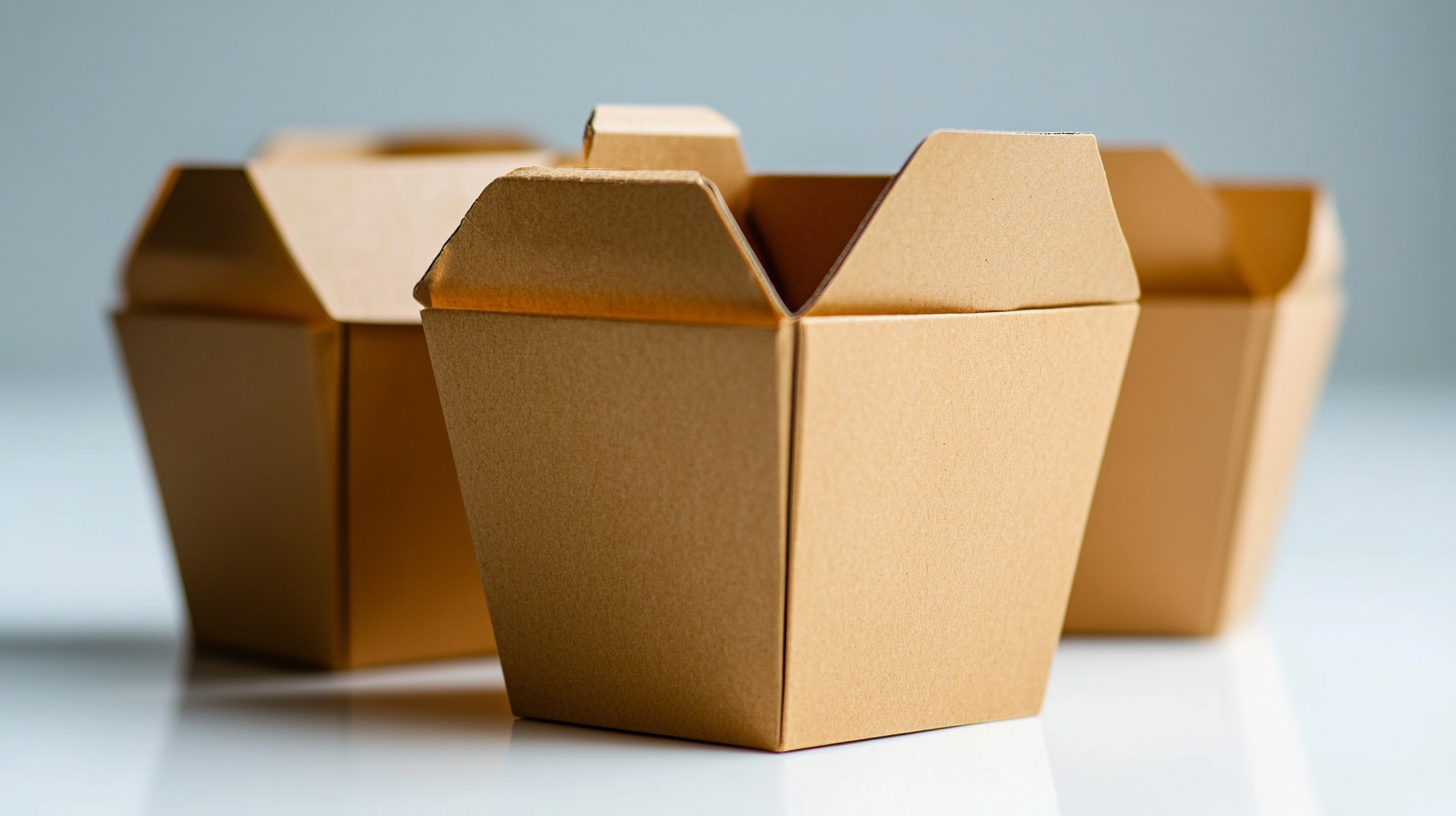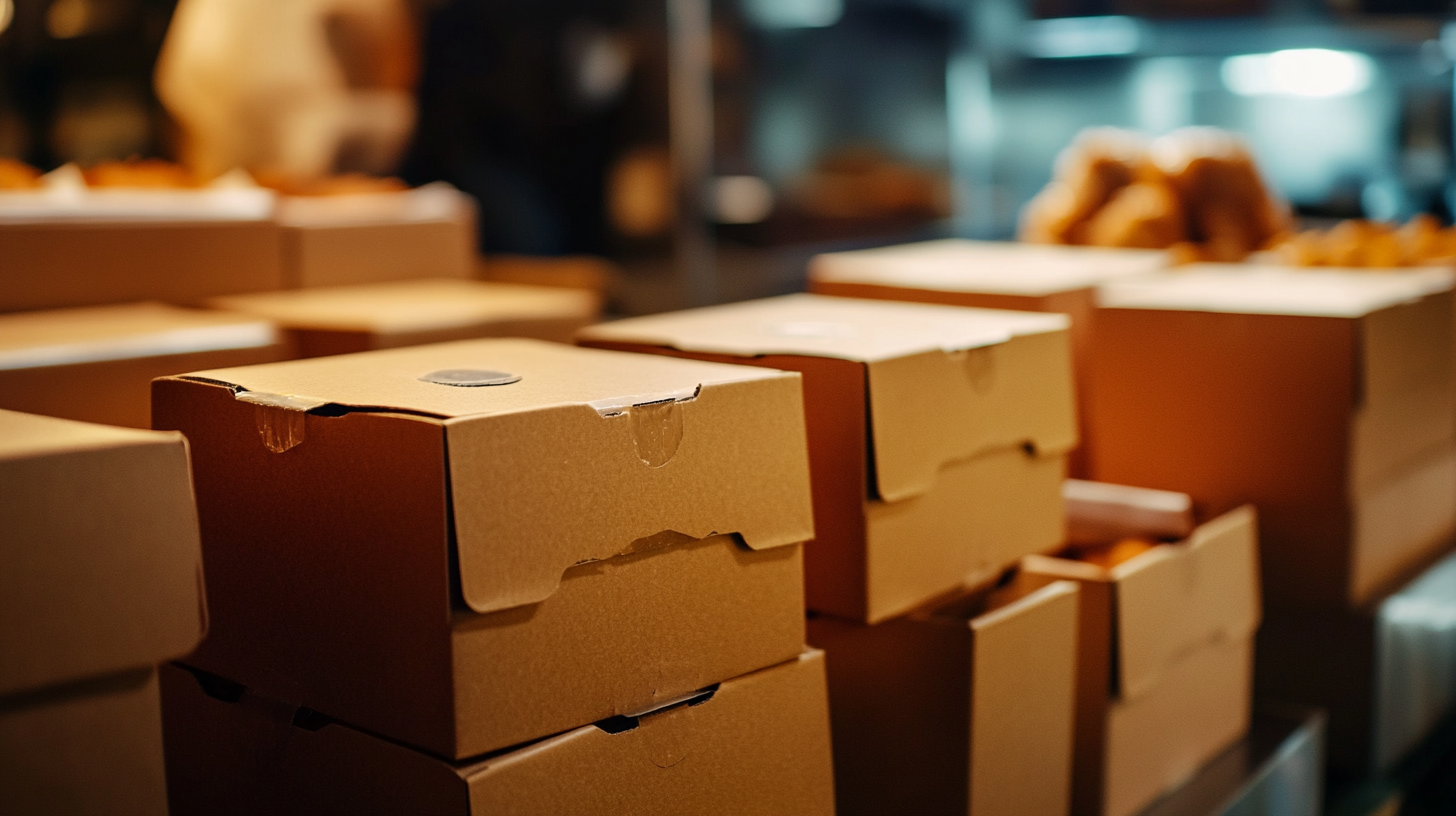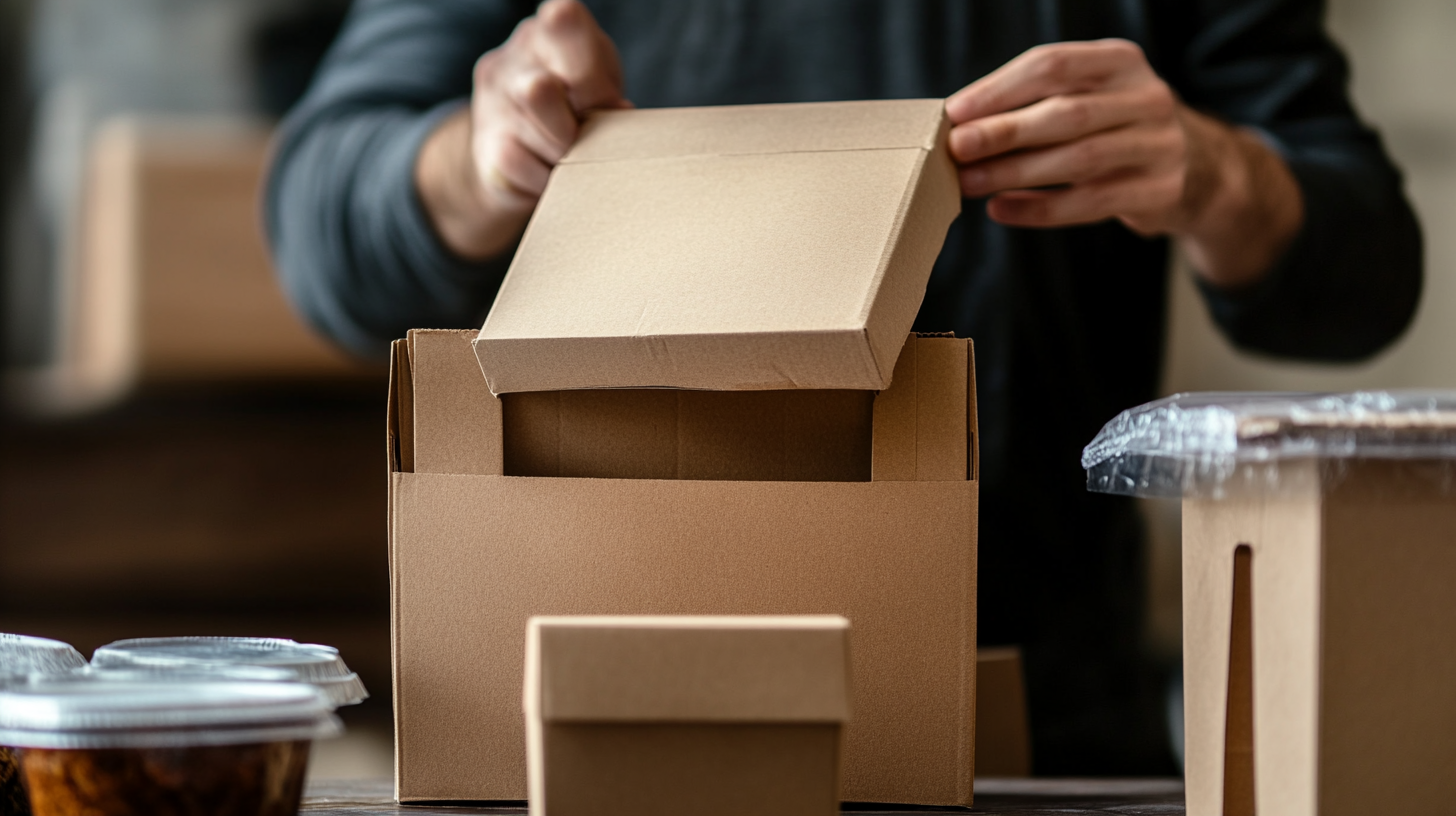Leave Your Message
In recent years, the demand for sustainable and versatile packaging solutions has led to a significant rise in the popularity of Cardboard Food Packaging Boxes. According to a report by Smithers Pira, the global market for food packaging is expected to reach nearly $400 billion by 2024, with cardboard packaging accounting for a substantial share due to its eco-friendly properties and adaptability. The features of these boxes—including durability, biodegradability, and customization options—allow manufacturers to cater to a diverse range of products, from fresh produce to gourmet snacks. As consumer awareness regarding sustainability grows, the shift towards high-quality, Chinese-manufactured cardboard packaging is becoming a global trend. Companies that prioritize innovation and quality in their cardboard food packaging solutions are not only enhancing their market competitiveness but also contributing to a more sustainable future in the food industry.

In the food packaging industry, industry standards play a crucial role in ensuring safety, compliance, and quality. According to a report by Smithers Pira, the global market for food packaging is projected to reach $429.59 billion by 2024, with cardboard packaging accounting for a substantial share due to its recyclability and eco-friendliness. Compliance with industry standards such as those set by the Food and Drug Administration (FDA) and the European Food Safety Authority (EFSA) is essential for manufacturers to ensure that their cardboard packaging materials are safe for direct contact with food products. These standards dictate the types of materials that can be used, as well as test methods for evaluating the integrity and reliability of packaging solutions.
Moreover, adhering to industry standards not only enhances consumer confidence but also provides companies with a competitive edge. A study by the Freedonia Group highlights that food product manufacturers are increasingly prioritizing sustainable packaging solutions, creating a surge in demand for high-quality cardboard food packaging. Packaging that meets these rigorous standards helps in preserving product freshness and extending shelf life, while also aligning with the growing consumer preference for environmentally friendly options.
As sustainability becomes a focal point in the food industry, businesses that invest in compliant and versatile cardboard packaging are likely to thrive in a market that increasingly values both safety and environmental responsibility.
When it comes to food packaging, the shift towards eco-friendliness is more important than ever. Cardboard food packaging boxes stand out not only for their versatility in accommodating diverse products but also for their environmentally conscious features. Made primarily from renewable materials, these boxes can be easily recycled, which significantly reduces waste and encourages sustainable practices in the food industry.
One key feature of cardboard boxes is their ability to biodegrade naturally, unlike plastic packaging that may linger in landfills for hundreds of years. This makes them a preferred choice for businesses looking to enhance their sustainability efforts. Moreover, incorporating water-based inks and adhesives in the production process further minimizes harmful impacts on the environment, making the entire packaging solution more eco-friendly.

The market for cardboard food packaging solutions has seen a significant surge, especially in response to the growing demand for sustainable and versatile packaging options. Analysts report a diverse array of products requiring efficient packaging, ranging from ready-to-eat meals to gourmet delicacies. As consumer preferences continue to shift towards convenience and environmental consciousness, manufacturers are faced with the challenge of innovating their packaging designs to meet these evolving needs. Cardboard packaging emerges as a favorable choice due to its recyclability, lightweight nature, and ability to preserve food freshness.
Furthermore, the healthcare packaging sector is also undergoing transformation, with a rising emphasis on safety and compliance. The market is segmented based on materials—plastic, glass, metal, and paperboard—each catering to specific product types such as rigid and flexible packaging. As healthcare continues to prioritize packaging that enhances user experience while ensuring product integrity, cardboard solutions present unique opportunities for innovation. This evolution signifies a pivotal moment for industries to adopt strategic packaging methods that align with sustainability goals while addressing consumer expectations.
In the ever-evolving food industry, packaging plays a crucial role in maintaining product integrity and attracting consumers. A comparative study of cardboard and other materials reveals that cardboard packaging stands out for its versatility, sustainability, and cost-effectiveness. Unlike plastic, which has become notorious for its environmental impact, cardboard is biodegradable and easily recyclable. This makes it a preferred choice for companies striving to implement eco-friendly practices in their operations.
When considering packaging options, it's essential to analyze the specific requirements of the food products being packaged. For instance, cardboard boxes offer excellent insulation properties that help keep food fresh. Additionally, they can be custom-designed to suit various shapes and sizes, making them suitable for a wide range of products, from baked goods to takeout meals.
When it comes to cardboard food packaging, compliance with regulatory standards is paramount. Various organizations, including the FDA in the United States and the European Food Safety Authority in Europe, establish guidelines to ensure that food packaging materials do not compromise food safety. These regulations dictate the types of materials that can be used, emphasizing the importance of non-toxic inks, adhesives, and coatings that do not leach harmful substances into food products. Adhering to these standards not only protects consumers but also helps companies avoid legal repercussions.
Moreover, safety standards extend beyond materials to include aspects such as handling and storage conditions. Cardboard packaging must be designed to withstand various environmental factors while preserving food quality. For instance, moisture resistance is crucial to prevent sogginess and maintain structural integrity. Additionally, packaging must be tested for microbial safety to ensure it does not harbor bacteria that could contaminate food products. By prioritizing regulatory compliance and safety within the design and production of cardboard food packaging boxes, businesses can enhance their credibility and foster consumer trust.

